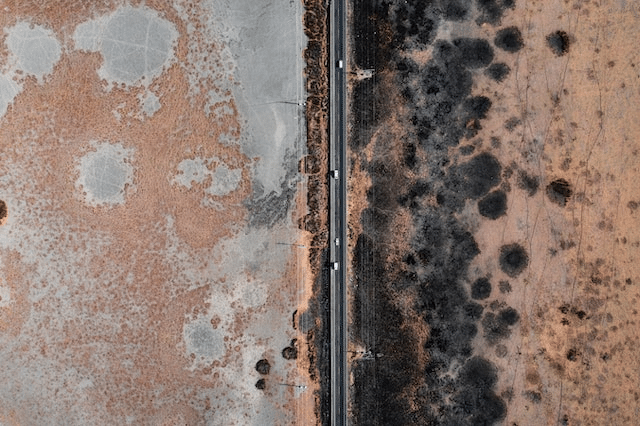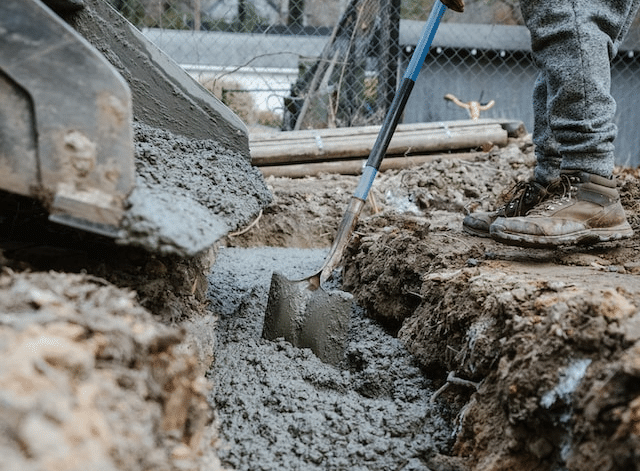Solve all your slab foundation moisture problems with this handy guide to prevention
If you’re a skilled builder or an eager DIY fan, you know excessive moisture problems in a concrete slab can be a constant headache. This challenge often occurs, especially when we don’t have enough time to use the right installation methods or pick materials that just don’t make the cut.
But don’t worry, we’ve got your back! This guide is filled with easy-to-understand tips, so you can conquer those moisture troubles like a pro while keeping things earth-friendly. It’s time to bring affordability, durability, and eco-awareness to your building journey.
Discover the secrets to building a better, drier foundation in your room, and embrace a greener, cost-efficient future.
Let’s create a greener future
By fixing moisture issues in your concrete slab, you’re not just improving your flooring or building’s structure, but also contributing to a greener future. It’s time to put an end to moisture in concrete slabs and all the related problems that come with it.
We’ve got the ultimate guide on how to prevent moisture problems on concrete floors. Step by step, we’ll show you how to conquer your concrete floor and slab moisture problems using eco-friendly solutions and practical know-how.
Get ready to dive in and learn how to tackle those excessive moisture issues head-on – Let’s go!
3 signs to spot excess moisture
If you are wondering how to do a moisture test, look no further. When we talk about moisture issues in concrete slabs, we can usually pin the blame on one of three things.
Whether you’re a seasoned professional contractor or an ambitious DIY enthusiast, understanding these key factors is essential.
1. Rising water levels
One of the trickiest challenges builders face comes from the rising water levels in the ground. These unexpected increases can cause wetness that even sturdy concrete can find hard to resist.
The professionals among us might recognize this common enemy straight away, while our dedicated DIYers might be surprised to hear this being one of the three signs of floor moisture. Whatever your experience with moisture level, it’s important to remember that the rising groundwater is a real threat to your new construction too.
2. Condensation
Ever encountered a “sweaty” concrete slab? Condensation occurs when warm, moist air rapidly cools, depositing moisture vapor and a layer of water on your concrete slab. A little bit of water might not seem like a big deal, but it can raise the water levels around quickly. This can potentially turn the area into a hotspot for moisture related plumbing problems.
Too much moisture issues can turn simple concrete slabs into what we call a “sweaty slab.”
3. Damp concrete floors
The third sneaky cause is using a concrete slab that isn’t properly dried. Sometimes, in the rush to start building, we may forget to let the floor surface of the slabs dry out properly. Damp concrete floor, can invite a host of problems down the line. We know, we know, when in a hurry these things happen! Believe us, we’ve been there!

Say hello to mildew
Put any or all of these factors together, and you’re looking at the uncomfortable possibility of dampness and the unwelcome smell of mold entering your space. These aren’t just annoying; they’re a clear signal of a deeper moisture issue present with the floor covering your slab foundation.
Moisture control from the beginning
It’s really important to keep these things in mind to put a stop to these problems before they even start. By understanding what causes the problems, we can take action at the start and promote a sustainable approach to building. This makes our buildings last longer, be more affordable, and have a lesser impact on the environment. In the end, we get to enjoy safe, dry spaces that look after us as much as we look after them.
Spotting the signs of moisture overload in concrete
As we stated in the paragraph above, foundation moisture problems can creep up unnoticed, creating issues that go beyond just surface cosmetic concerns. Usually, the signs of moisture on concrete floors or in concrete slabs are easy to notice, think of discoloration of surfaces to warping wood or detecting a spike in the relative humidity in levels.
Prevent concrete moisture issues instead of cure
These issues can affect your home, furniture, carpets etc. causing them to decay and pose significant health risks, such as triggering allergies or asthma symptoms. Remember, time and money spent on rectification can be saved with early prevention. “Prevention is always better than cure.”
Isn’t that what our grandparents always taught us?
Moisture issues affect the DNA of your building’s structure
We must also understand that moisture weakens not just the surface of concrete substrate, but also the structural reliability of the foundation. When moisture leaks into a concrete slab, it could potentially create cracks, speed-up the corrosion of reinforcing steel, and threaten the core strength of your foundation. Eek. It’s not just a slab moisture problem; it challenges the DNA of your building’s structure – the foundation, again emphasizing the need for preventive measures against concrete substrate moisture problems.
What is the answer to prevent floor moisture issues?
With this in mind, the use of robust and water-resistant materials becomes significant. That’s where Cementmix – our affordable, durable, and eco-friendly product – finds its relevance. Designed to stand up against moisture, Cementmix not only solves your cement floor moisture problems, but is also very cost-effective in the long run, unlike vapor barriers. Cementmix is not like any other moisture barrier, but instead replaces water in the mixing process and makes all cements, concrete, self-leveling mortar, stucco and much more, through-and-through water- and liquid proof
For professionals and DIY-champs
Our products stand strong against outside forces, keeping true to our promise of being eco-friendly and sustainable. By blending practical know-how with expert insight, we help both professionals and DIY fans tackle moisture problems in concrete projects before they even get a chance to cause trouble.

Stopping slab foundation moisture problems from the start
The secret weapon to averting moisture chaos in your slab foundation and concrete and tile flooring products is none other than our waterproof Cementmix. Outstanding in its class, this concrete mix provides a gold standard guarantee – your slab will be 100% waterproof.
An eco-friendly lifesaver
Cementmix is your secret weapon against the damaging effects of water on your building projects. It works on strengthening your building, adding many more years to its life. And guess what? It does all of this while caring for our planet because it’s eco-friendly.
Nurture your concrete
But Cementmix doesn’t just offer protection, it also nurtures the moisture in the concrete during the drying process, building flexibility into the surface of the concrete material which helps it last longer. Isn’t that amazing? A product that’s great for your project while still caring for our planet. We’re pretty excited about it!
Putting all the pieces together
Now, let’s circle back to our main conversation: how to prevent moisture problems in a concrete slab. Yes, using reliable, high-quality products like Cementmix Waterproof is an important step. However, it is only a part of the puzzle.
The real secret lies in being proactive and acting with foresight, because yes, prevention is indeed better than cure. Stopping water issues before they start not only protects your building project, but it also saves you time, money, and energy.
So let’s work together to prevent concrete moisture problems in the beginning, before they become damaging and costly headaches.
With the link to Cementmix, you can learn more about this revolutionary product, and let it change the way you look at moisture issues in your floors, making your construction journey smoother, more enjoyable, and eco-friendly.
You’re not just building a project – you’re building a future, a sustainable one.